ROUTE OF THE MAYA
November 9 - 26, 2010
Page Thirteen
Guatemala - Yaxha continued
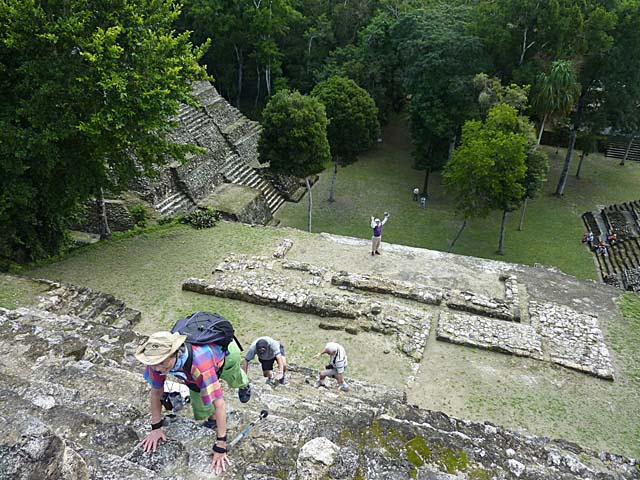
On our way up another step pyramid at Yaxha. Using both your hands and feet was advisable due to the
steepness. You can see parts of two other step pyramids to the left and right that form the North Acropolis.
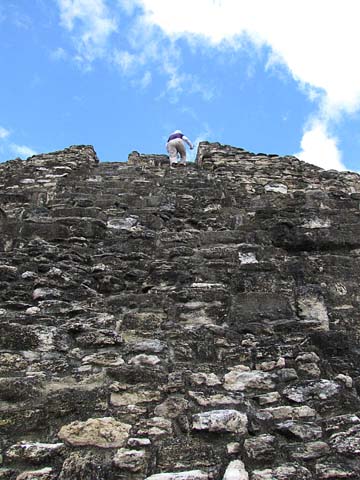
There was another steep section above
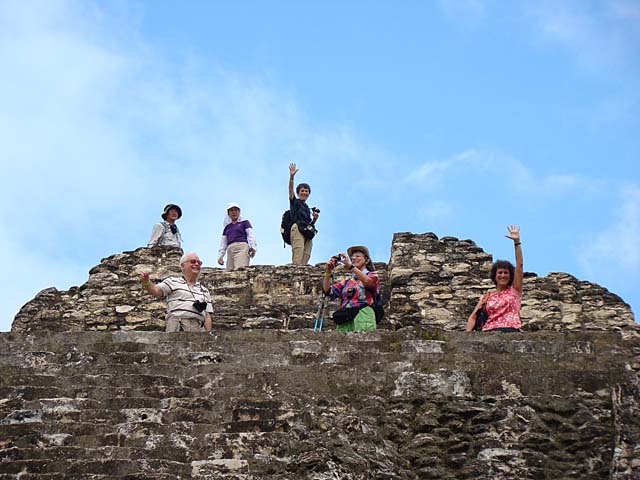
At the top
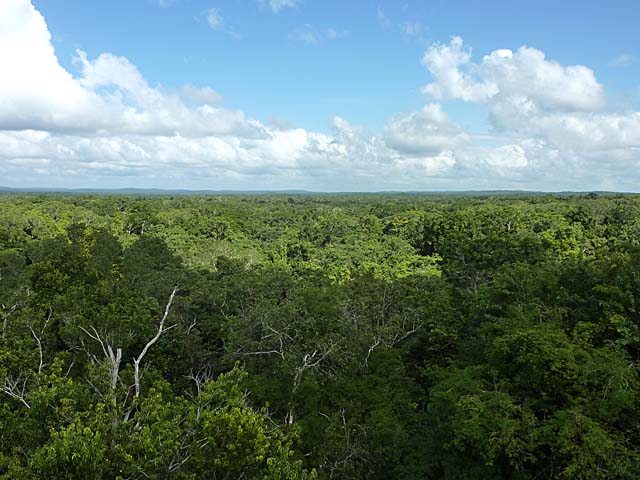
View from the top - Forest as far as we could see. Mexico is in the distance.
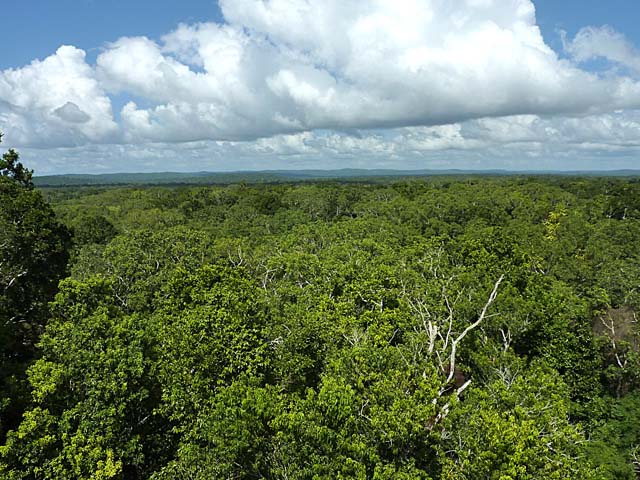
Looking in another direction at the top
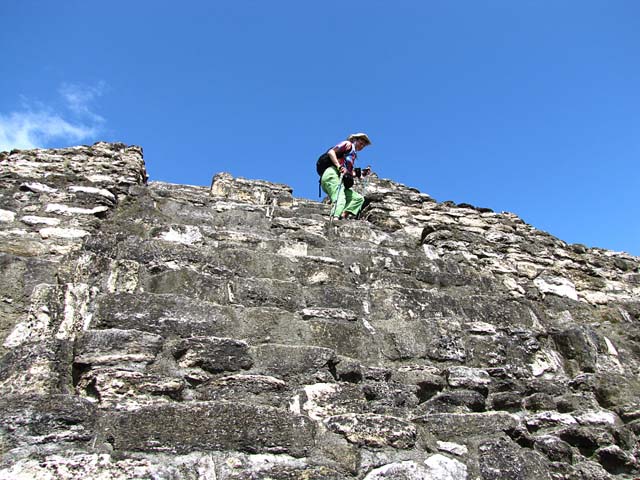
When you go up, you must get down, which is trickier than going up due to the uneven and broken steps.
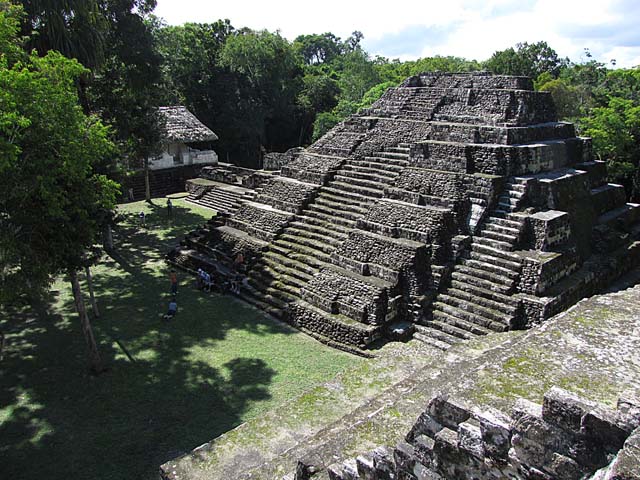
A view of another step pyramid from the one we were on. The pyramids were facing each other as we
saw at other Mayan sites. There are several complexes excavated, the most famed of which is this area,
the North Acropolis.
This Plaza contains three tall temples with outstanding views of the
surrounding rain forest.
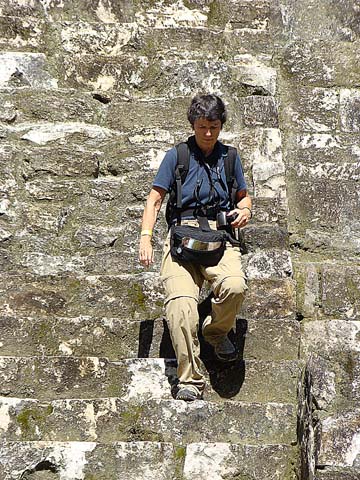
Cautiously making my way down
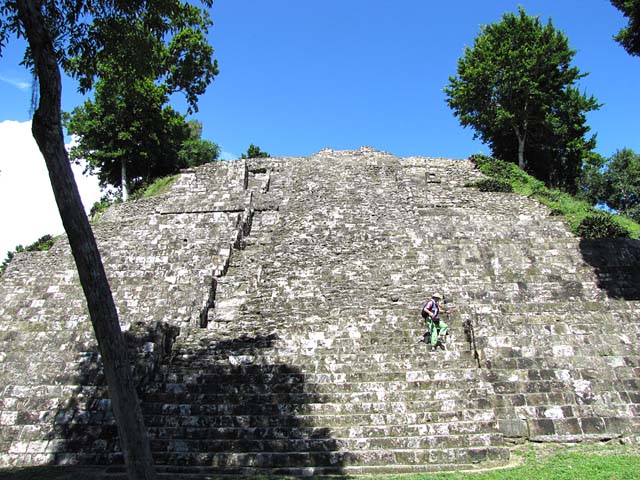
In contrast to our overcast and rainy day in Tikal, we had beautiful weather for touring Yaxha.
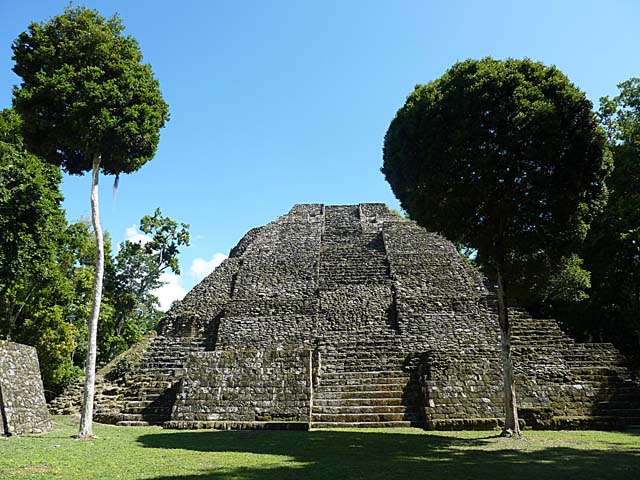
Step pyramid between two beautiful trees.
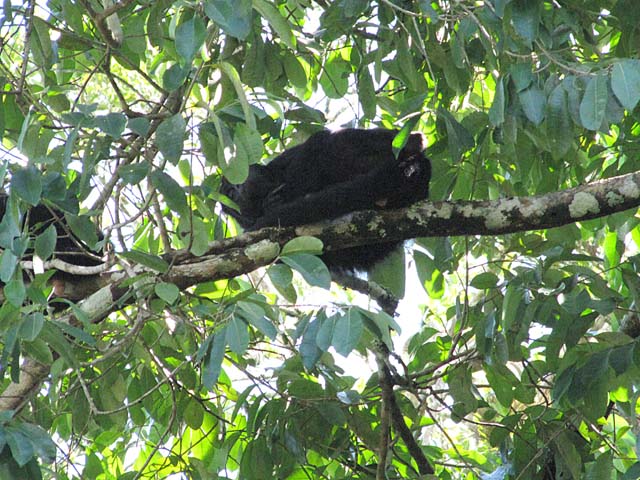
Two howler monkeys high up in a tree at Yaxha. We also saw and heard them at Tikal. They are native
to Central and South American forests. They are known to defecate on you if you disturb them. Fortunately,
these howler monkeys seemed to be sleeping. You can barely see the closed right eye of the one in the middle
of the photo, with his hand under his chin.
As the name suggests, vocal communication is an important part of their
social
behavior. Group males generally call at dawn and dusk as well as at times throughout the day. The main
vocals consist of loud, deep guttural growls or howls. Howler monkeys are widely considered to be the loudest
land animal. According to the Guinness Book of World Records, their vocalizations can be heard clearly for 3 miles.
We certainly heard them often, even when we did not see them. It is hypothesized that the function of howling relates
to intergroup spacing and territory protection, as well as possibly mate-guarding.
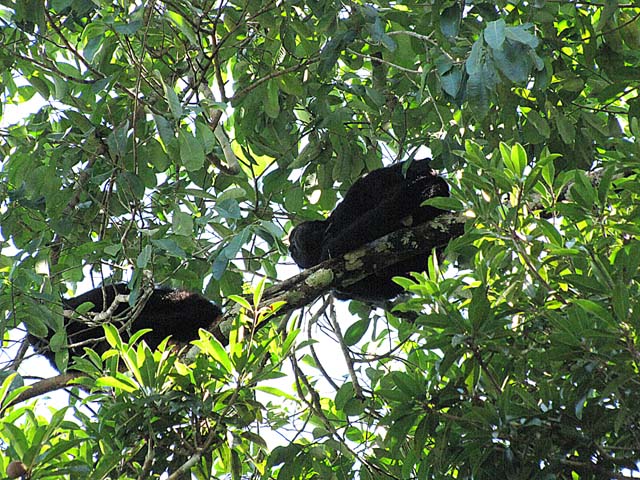
The 2 howler monkeys sleeping high up in the tree. Howlers eat mainly top canopy leaves, together with
fruit, buds, flowers, and nuts.
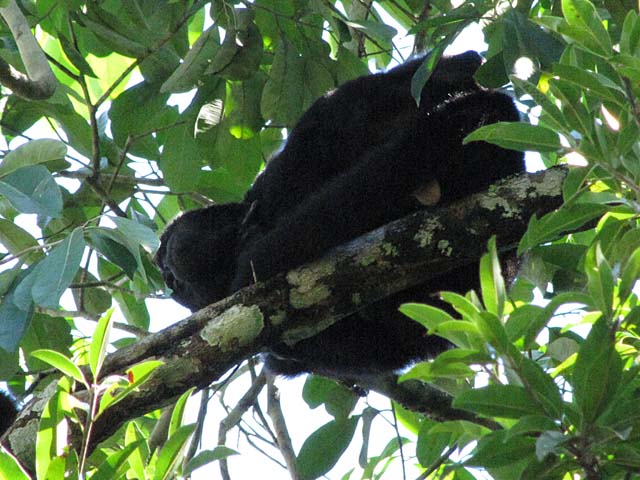
This is the closest view I could get with my 20X zoom lens.
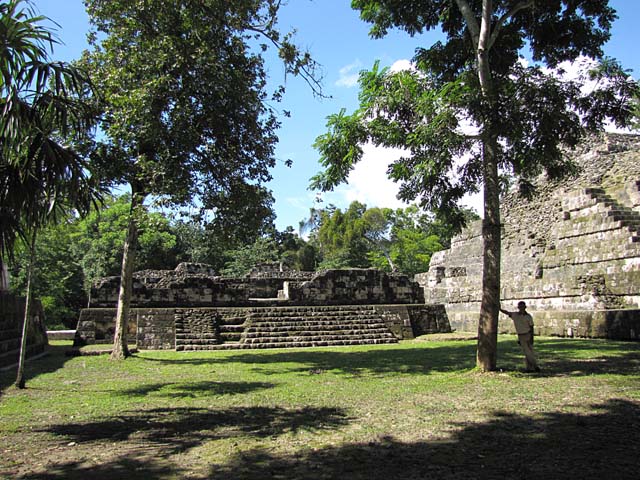
Near the area where we saw the howler monkeys
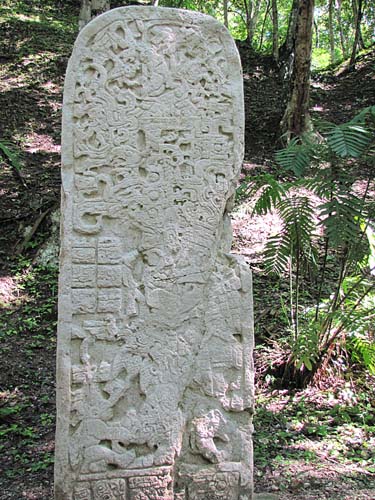
Another stela showing a ruler or priest-king
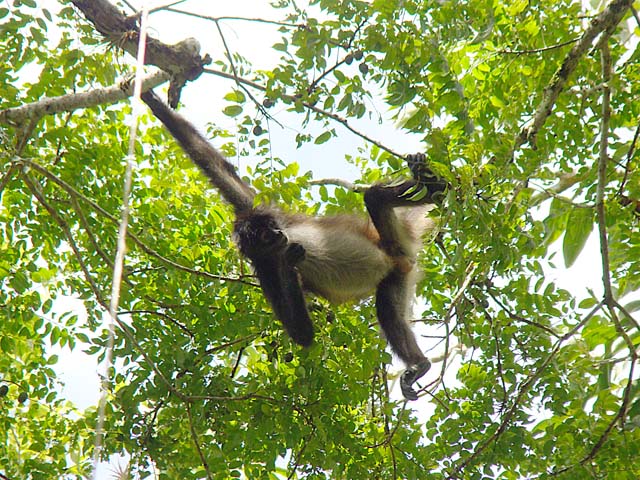
Spider monkey at Yaxha. We also saw spider monkeys at Tikal.
Like howler monkeys, they are found in
Central and South America. The disproportionately long limbs and long prehensive tail makes them one of the
largest New World monkeys and gives rise to their common name. Spider monkeys live in the upper layers
of the rainforest and forage in the high canopy. They primarily eat fruits,
but will also occasionally consume leaves,
flowers, and insects. Due to their large size, spider monkeys require large areas of moist evergreen forests and
prefer undisturbed primary rainforest. They are social animals and live in bands of up to 35 individuals
but will split up to forage during the day.
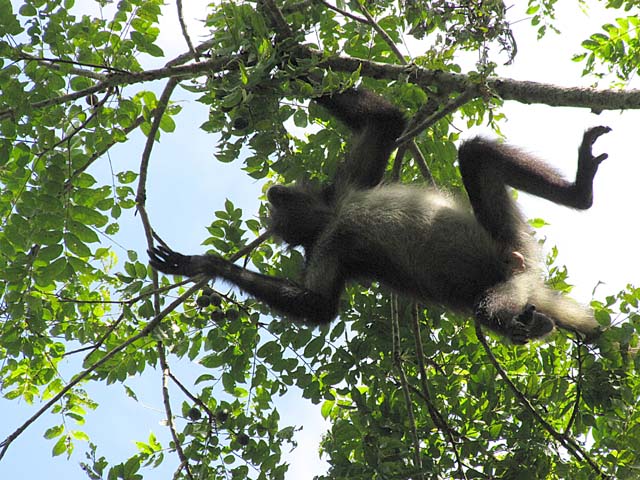
They can produce a wide range of sounds and will bark when threatened, other vocalizations include a whinny
similar to a horse and prolonged screams.
Spider monkeys are susceptible to malaria and are used in
laboratory studies of the disease. The population trend for spider monkeys is decreasing; the various species of
spider monkeys are either vulnerable, endangered, or critically endangered.
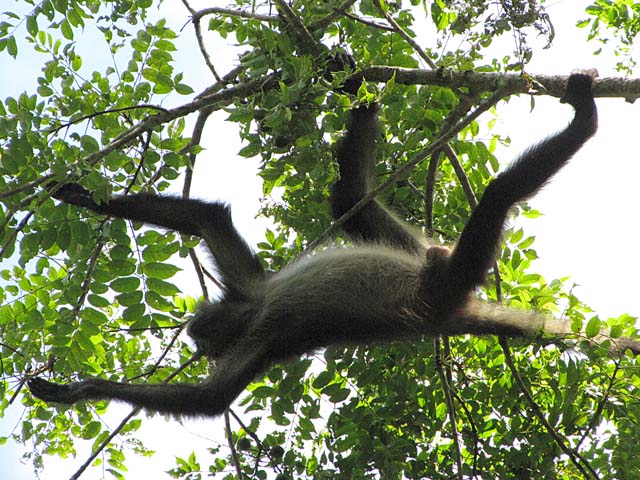
Unlike many monkeys, they do not use their arms for balance when walking, instead relying on their tail.
The hands are long, narrow and hook like, and have reduced thumbs.The fingers are elongated and recurved.
The hair is coarse, ranging in color from ruddy gold to brown and black; the hands and feet are usually black.
Heads are small with hairless faces. The nostrils are very far apart, which is a distinguishing
feature of spider monkeys.
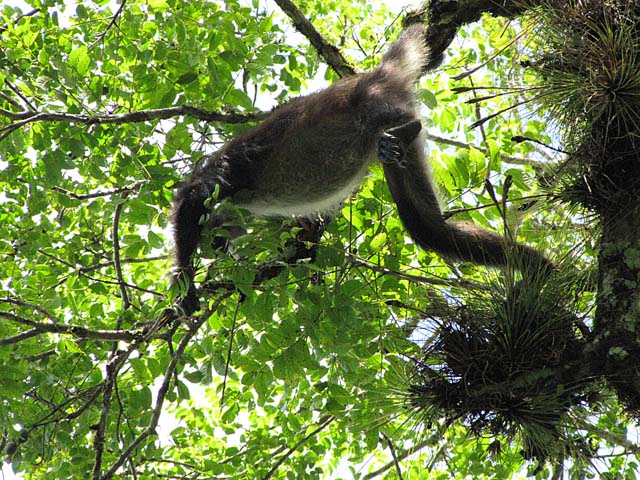
Males and occasionally adult females may growl menacingly at the approach of a human. If the pursuer
continues to advance, the monkeys often break off a live or dead tree limb and drop it toward the intruder.
I did see a small tree limb fall near me at one time. Possibly, it was probably the act of a spider monkey.
They do not
actually throw the branches, but twist to cause the branch to fall closer to the threat. The monkeys
may also defecate and urinate toward the intruder. In this photo, notice the left hind leg and foot hanging down.
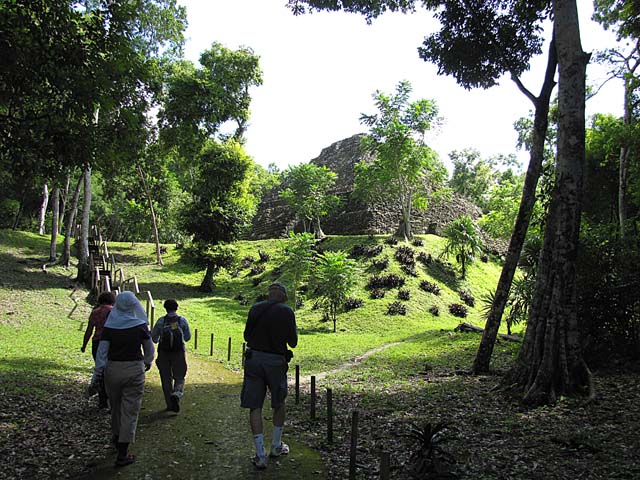
Passing by another step pyramid on our way out of Yaxha. From Yaxha, we drove to the border of Belize
and spent the night in Belize City before heading to the last Mayan site that we saw, Lamanai.
Link to Page 14 - Belize
Link to Page One of Route of the Maya
Pat's Home Page